Lei Feng network (search "Lei Feng network" public number concerned) : According to the author of this article Zeng Shaoqin , GrowingIO business analyst.
This article will share with you the necessity and importance of conversion analysis, how conversion analysis of operations and products are performed, how to disassemble transformation steps, and the four major causes of user turnover, and the corresponding solutions.
| Why do conversion analysis?
For a product, how to allow users to better convert is a key factor in whether users can retain value.
For operations, Guang open source seeks out target users, and even has to choose some payment channels (as shown below) to deliver for better results. Here we need to assess the effectiveness of measuring the amount of channels, not only to know the quantity, but also to know the quality; otherwise it will produce why the user is growing every day but the benefit is still not good.
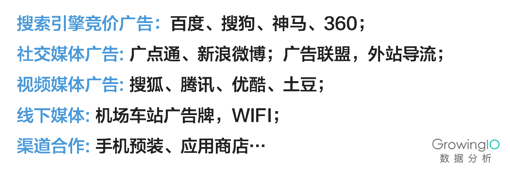
The quality of users from different channels will also affect their transformation within the product. At this time, the product manager will have to think about it. In addition to this, it is also necessary to make users better use my products. Improve product conversion. There will be many practical problems here, such as:
Why is the user of the product still unsatisfied with the diversion operation?
How to make product conversion (service/product purchase) better?
How is this new feature going online?
Two product solutions, which is better?
Therefore, the effect of conversion is closely related to each operation and product manager. Many of the things we do are, in the final analysis, to achieve better product transformation. However, conversion is not a one-step thing, and the optimization of each link may bring better results. Â
Take the behavior of the users of the transaction product flow as an example: Traffic flows from various channels and reaches our landing page. Interested users start to browse the page and even start the purchase process until the final purchase is successful. In the process, the market and products Managers and operations must make full use of tools for better conversion.
Next, we will follow the transformation process to dismantle: First of all, to ensure that the source of traffic is good , if the source of the traffic is a problem, it is difficult to transform, for example, the user is not the target user, we see the user Come, but he won't be able to convert. Secondly, it guarantees that the user's conversion within the product is smooth . It is not because of problems such as module settings and bugs that cannot be continued and becomes a lost user.
| How to do a good analysis of channel traffic?When we first measured channel diversion capacity, we may be looking more at the amount of traffic. Next, we can see more data indicators, including bounce rate, duration of stay, browse the page to measure the flow of the situation. However, these indicators are all auxiliary indicators, and the bounce rate of one channel may not be low, but you cannot guarantee that the conversion of this channel must be good. Therefore, we need to associate traffic sources with conversion data, which is the basis for refined operations.
1. Channel Conversion Analysis
The conversion here can be a product conversion, such as registration, or the success of an order payment, or it can be some user behavior used to determine the quality of the analysis channel: Favorite items, likes, reviews, etc. The more users perform in the product, the more conversions they have and the more likely they are to survive. At this time, we need some data to evaluate.
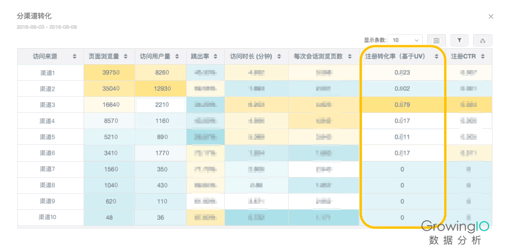
2. Differentiate malicious traffic
During the monitoring of channel traffic, it also involves malicious traffic that runs disgustingly, and how to distinguish bad traffic from high-quality traffic. Because malicious traffic always has some characteristics, such as a certain part of people accessing and hardware devices at a time. More fixed, using a specific browser, and so on.
Last year, some APP merchants found out through analysis that if there were a large number of iPhone5C users in a certain channel, it might be a problem. Because in order to be more confusing, some brush vendors will use real machine brush to cheat, but considering In terms of cost, the relatively cheap iPhone 5C is selected so that the frequency of this model becomes very high. Malicious traffic can always be traced. How should we troubleshoot this time?
The first step: multi-dimensional comparison and discovery of associated features
The following picture shows the situation of each channel conversion. The conversion efficiency of the first step of Channel 3 is very low. At this time, there may be problems.
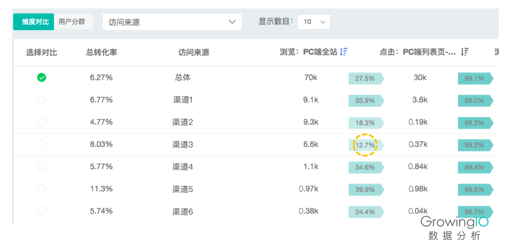
We took out the users of channel 3 and segmented them by other dimensions. For example, we differentiated by region, browser, etc. When we looked at the conversion of different browsers, we found that the conversion rate of a certain browser was also extremely low.
Step 2: Cross-correlate features
After finding a browser that might be problematic, we did a distribution of browser versions and found that some versions of older browsers in the browser versions used by users of this channel have increased dramatically.
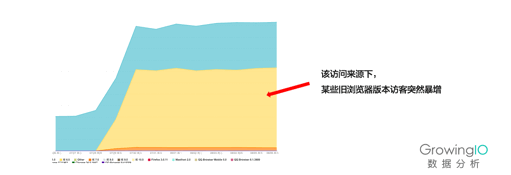
Step 3: Confirm with time dimension
Normal access time should be M-type, there will be two peak hours in the morning and evening, but the middle of the night is the lowest flow, while the channel 3 user's access time is 24 hours a day, even in the early morning and midnight, so It is problematic that we can basically lock this channel.
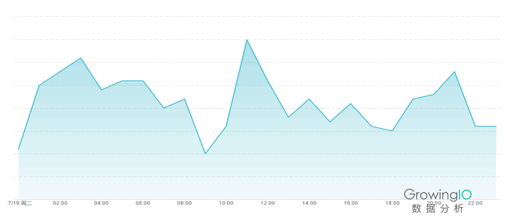
Therefore, we need to open up traffic conversion data, do channel evaluations, and use data analysis tools such as GrowingIO to locate problems.
| How to disassemble conversion steps?When users come in through various channels and enter the product, we begin to dismantle the conversion steps within the product and look for optimized space.
There are two ways to disassemble a conversion step:
1. Vertically dismantle according to the process, study the number of registrations completed, the amount of successful purchases;
2. Horizontally dismantling according to dimensions and crowds, the results and expectations of the transformation are different. At this time, horizontal dismantling and comparative analysis are performed.
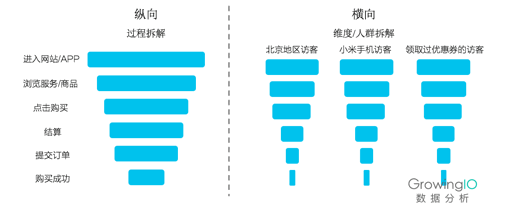
We have heard many users ask such questions before. Do I have a high or low conversion rate in the industry? Do I have room for optimization? In fact, we do not have to benchmark data. On the one hand, many of these data are company secrets. On the other hand, third-party assessment methods may not be the same as yours. Â
Without industry data, your own conversion data contains a lot of information, ranging from the time dimension (analyzing daily conversions, analyzing activity and peacetime conversions), platform dimensions (for iOS and Android), and other data dimensions. Analysis, you can find a lot of optimization space.
| Four Causes and Countermeasures user conversion lossThe causes of the loss of different conversion steps are also different, and some are because of the lack of attractiveness, and sometimes the problems encountered during use.
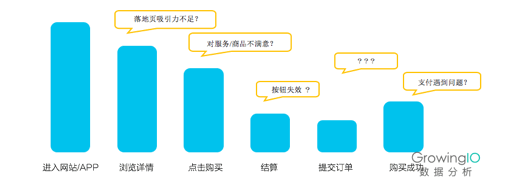
Although the causes of the loss are different, there are four major causes of loss: Â
Needs mismatch
Product features/services/products are not as expected
Bad interaction experience
"Mystery" reason
Next, we will analyze the lost operations of these users one by one, and combine the solutions of case exploration.
Needs mismatchThere are many situations where the demand does not match. One is that the product can stimulate the user's needs, but the user does not see it; the other is that the product does not satisfy the user's pursuit.
If our product can stimulate the needs of users, but users do not see it. At this time we need to let users see the right content in the right place. We can analyze the click behavior of users on the website by focusing on location statistics and heat maps, find the golden location, and put the most appropriate content.
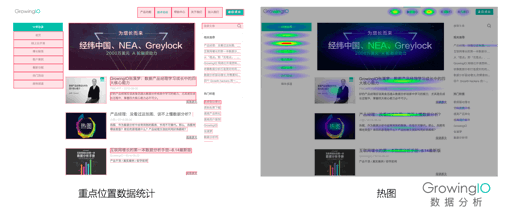
If the user's needs are not met, then it is necessary to analyze this part of the demand. In fact, there are more users who have experienced search results than you think. We can use the statistical website to search for search term information without a result page, and we can know the specific needs of users who have not been satisfied. At the same time, it compares the number of searches in the search box and measures whether or not to do specific content, services, and product construction for this part of the demand.
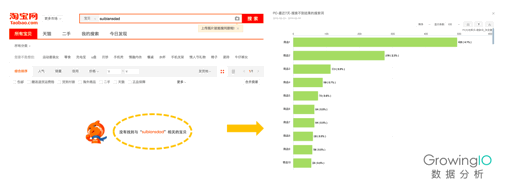
When the product's features, services, or products do not meet the user's expectations, it can analyze whether the various functions in the product that help users convert have not played a positive role. At this time, users who have done a certain operation may be grouped. For example, the e-commerce platform groups users who have viewed the product review page to verify whether the review has contributed to the final conversion.
As shown in the figure below, the conversion rate of users who have reviewed the reviews (on the right side of the figure below) is 53.1%, which is higher than the overall level; if it is lower than the overall level, some of the settings in the comments may have problems.
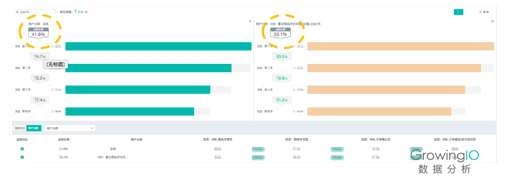
The common situation is that the device or browser does not adapt. When the dimensions of the browser or the device are divided, the conversion rate is low, and the positioning and repairing problems are found in time.
Loss of other usersAfter troubleshooting, when it is found that there is no problem with the above, you need to check the user's original access trajectory, and some users walk through most of the conversion path, but the last step is to give up, if there are many such users, you need to look at specific products to see .
If the unit price of the customer is too high and the user hesitates at this step, we need to push a user. Need to open up user behavior and user ID, and then further targeted operations; for example, send some vouchers or coupons to these users to stimulate conversion.

Conversion analysis is a systematic job that involves all aspects of product and operations. The prerequisite for improving conversion is to fully disassemble the conversion steps, evaluate the conversion effect from the source of the traffic, and use multi-dimensional data to locate the problem.
Lei Fengwang Note: The author of this article Zeng Shaoqin graduated from Peking University, has worked at the second hand, Baidu, GrowingIO, has a wealth of data analysis experience. The original text was posted on the GrowingIO technology blog and was authorized by Lei Feng. Reprint please contact us for authorization, and keep the source and the author, not to delete the content.
Gas Generator,4 Cycle 16 Cylinders,4 Cycle 16 Cylinders Cummins Generators,4 Cycle 16 Cylinders Generators
XCMG E-Commerce Inc. , https://www.xcmg-generator.com